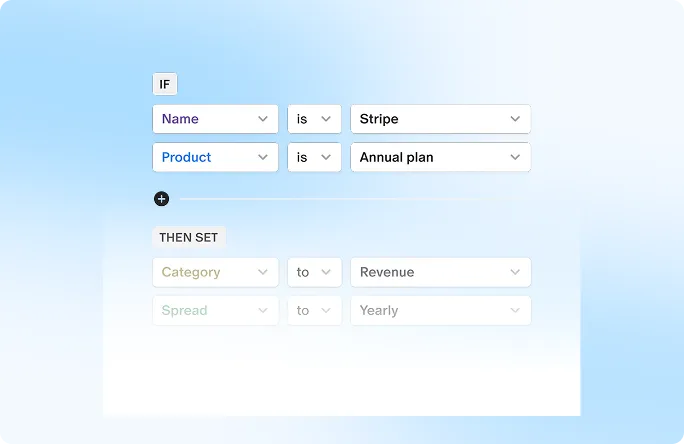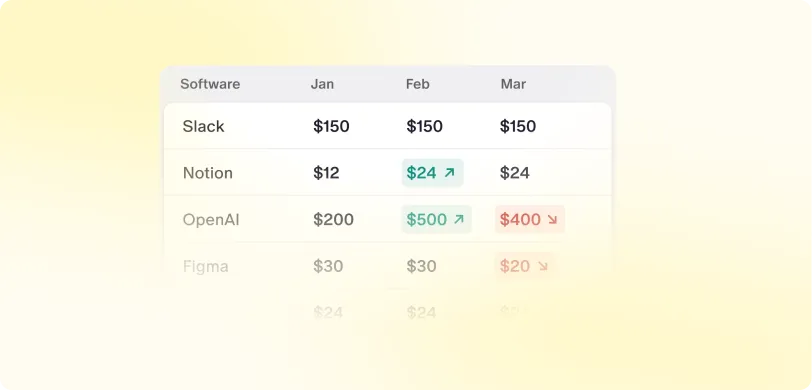Startup founders and HR should understand the pitfalls for ESOP creation and administration to avoid mistakes that could create issues in talent acquisition, motivation and retention.
Most of the VC firms ask for creating an ESOP pool before making an investment. So, ESOPs are unavoidable when you raise funds from VC firms. But due to a lack of awareness/understanding, many startups make mistakes that defeat the purpose of ESOP programs.
When the creation, implementation, administration and distribution of stock options is not done properly, it creates distrust among employees.
The story of redBus, the poster boy of Indian startups in the last decade, is a cautionary tale for founders and employees. A misunderstanding in ESOP terms led to a rift among its cofounder, management and staff leading to the resignation of the company COO, CTO and some managers.
Also, companies need clarity in terms of who can be covered in the ESOP Scheme. As per Indian regulations, ESOPs are only for employees, which means advisors and consultants are outside the purview of the ESOP pool. There is a separate route via which the startup can reward advisors and consultants with equity. It can be done by creating a legal agreement with the advisors. You can lay out the vesting schedule mentioning how many shares you want to give to them after what milestone. Note that this is given separately from the ESOP pool and strictly outside the purview of esop administration.
In this post, we are going to discuss some of the common ESOP related pitfalls to avoid.
Founders in India often don't place credibility on ESOPs as they don't do the job for which they were launched. Many times, employees also are suspicious of ESOPs, as they have not seen enough people getting rich via ESOPs. Not many success stories are available.
Many companies have very restrictive policies in their ESOP agreement. If the employees leave, then unvested ESOPs get cancelled. Further, they have 90 days to 180 days to excise their options meaning pay money from their pocket and further pay taxes on it without knowing when they will get the opportunity to cash it out.
The success of the ESOP scheme depends on the credibility of the company, how employee-friendly it is and the manner in which it is communicated to the employees.
ESOP Mistakes to Avoid
1. Faulty Plan Design.
ESOP programs are a technical area and require a complete understanding of tax, accounting, and legal considerations to come up with the right scheme for the company, employees, and investors. It prevents problems later on.
There are many things that need to be considered while designing an ESOP plan. While you may design the plan considering the startup will continue to operate you should also consider exit scenarios as well like merger and acquisition and IPO. We recommend only experienced ESOP professionals should design the program that safeguards the interest of employees and the startup in different scenarios.
Let's see two issues to understand this.
Not considering exit scenarios: During the startup's acquisition or change of control, what happens to unvested options?
Without accelerated vesting, the employees who have not completed a year won't make money. This is what happened in the redBus case. Employees who were asking why the money didn't show up in the bank account found that there was no accelerated vesting in the ESOP agreement.
There are two kinds of accelerated vesting: single trigger and double trigger acceleration. In a single trigger acceleration, all the unvested options automatically vest on hitting certain events.
Though single trigger acceleration is employee-friendly, it is generally not used. It poses a problem during mergers and acquisitions. The acquiring company fears that employees whose experience they want to use will leave after the acquisition. So, they might back off from the acquisition.
Thus, companies used double trigger acceleration. In a double trigger acceleration, two conditions need to be met in order for the unvested options to vest automatically: acquisition or change in control of the company and the acquiring company asking the option holders to leave the company. This provides protection to employees and acquiring companies and may seem fair to both.
Having a very short post-termination exercise (PTE) window. What happens to the vested options of ex-employees?
Generally, most ESOP schemes force quitting employees to exercise their vested options within 90 days even if there is no liquidity event in the near future. Otherwise, they lapse. This requires employees to shell out money from their pocket. Additionally, it puts a tax burden on employees. As a result, most leaving employees choose not to exercise their options.
Since employees have already have worked to earn those stock options and spend time till they vest, we think that it is not fair to the employees. If they cannot exercise the options, it all goes in vain, no matter how many options they have and how long they worked in the startup.
Slowly, companies are coming to the same understanding and offering a long post-termination exercise (PTE) window. Some are even offering infinite PTE. It means that employees can continue to hold their vested options for as long as they want.
For example, take Pinterest. Pinterest, a social media platform now allows employees to retain their vested stocks for up to 7 year period after leaving the company. This provides everybody with the opportunity to wait for liquidity events to exercise their options. They can wait till the liquidity events, like IPO or merger and acquisition, to buy the shares and can sell some of the shares to cover the money required to exercise their options and pay tax on them.
2. Delayed and/or Poor Communication with Employees Regarding Stock Options
We think that the first and foremost thing when implementing ESOP programs in your startup is to educate your HR professionals about the scheme. They are the chief sales officer of your ESOP programs. Unless your HR professionals themselves are not sold on the benefits of stock options, how will they use them to attract talent?
By sharing a formal ESOP agreement at the time of joining, startups can make it easier for themselves and their employees to appreciate the ESOPs. Like you share the offer letter that contains all the terms and conditions before the employee joins, a similar ESOP agreement must also be provided to those who are given ESOPs.
Communication with employees is very important after rollout. Introduce employees to ESOP, its benefits, and risks. You cannot communicate the value (of ESOPs) unless you are open and transparent about it. To eliminate any future misunderstandings, have clear expectations from both sides.
Educating employees creates an alignment between employees and the company. Once employees see the value in ESOP, they will do their best to help the startup grow and reap the benefits. Some of the good practices which you can incorporate into your organization for communicating the value of ESOP are:
- Regular discussion and meeting: Employees should understand what ESOPs are and their benefits and risks.
- Share informational docs: Grant letter, terms and conditions.
- Whom to reach/contact in case of doubts? This is where the chief sales officer of your ESOP Pvt Ltd comes in: your HR.
- Create a FAQ on your website and update it regularly.
- Communication of ESOPs through an automated system like Qapita.
Chaitanya Ramalingegowda, co-founder of online mattress retailer Wakefit says "Most people joining have a very poor understanding of what valuation you are getting shares at, what could be the upside, so just education of this option is also badly needed."
3. Not Rolling Out the ESOP Scheme Properly
Making verbal commitments or over email. It brings problems later on if the stock options are not immediately granted. Later due to restrictions from investors and legal challenges, it may not be possible to fulfill your promise. So, if you ever want to give stock options to any employee, always make it formal.
The more you delay in granting the letter, the higher the amount at stake. The higher the amount at stake, the more issues it will create. The employee may choose to take a legal route. It may cause reputation problems. And most importantly, it will affect the morale of other employees.
Verbal or even ESOPs that have been given in writing are not valid unless the ESOP program has been properly rolled out. If you want to understand how to set up ESOP, we have a detailed article on this topic. Here is a summary of the post:
It starts with the creation of an ESOP scheme. It contains the terms and conditions that govern your ESOP program. It has a mention of the vesting schedule, eligibility, exercise price, exercise period, etc.
Then, you need to get a valuation certificate. This is required for accounting and auditing purposes. Any valuation you've taken in the last 6 months works unless there is a liquidation event in between. Also, you can use the report you have taken while fundraising.
Next, board approval is required followed by shareholder approval through an extraordinary general meeting (EGM). The last step to roll out an ESOP program in your company is to file a resolution with the registrar of the company (RoC) within 30 days of the resolution being passed in the shareholder meeting.
Then, you can start issuing grant letters to your employees. If the proper procedure is not followed, the granted stock options are not valid.
4. Managing ESOPs on Spreadsheet
It's simple to manage ESOPs when you have a few employees who have options. But as the number of option holders increases, spreadsheets become an inefficient way to manage them.
ESOPs are dynamic and managing them with traditional methods such as paper, spreadsheets, and over emails is tedious. It not only gives rise to human errors but often leads to issues that can cause large damage to the company (Example: legal issues between employee and employer due to discrepancies in the record).
Some of the common issues which arise due to spreadsheets are losing track of vesting schedules of option holders, not having accurate or complete transaction history, and inconsistent data spread across multiple versions of the sheet. Furthermore, as the number of users increases across stakeholder organisations, it is almost impossible to update everyone whenever there is a change in the details.
Software dedicated to managing ESOPs would easily allow for automatic updates and synchronisation while keeping track of every single transaction. No information is ever lost and there is a single source of truth accessible and transparent to all stakeholders.
Qapita, an ESOP management platform, can help you with:
- Grant new awards: Once you have done the initial setup, you can issue digital grant letters directly from the platform. It also solved the problem of employees losing paper-based grant letters. With Qapita, you can issue the options quickly.
- Sign grants: Employees can directly sign the grant letter on the platform. It solves any legal or compliance issues.
- Track of vesting schedule: It's challenging to keep track of unvested, vested and exercised stock options in spreadsheets. Not only it's time-consuming, it prone to errors. There are cases when employees exercised more than vested options or there is a discrepancy on vesting dates. Qapita solves all the issues related to tacking stock options by acting as a single source of truth and keeping all the parties informed and updated.
- Manage exercise: Again, keeping a record of exercise of google sheets/excel is problematic. Qapita takes care of how many options are exercised and at what rate to maintain an accurate and updated record of employees stock options.
- Engage employees: Qapita allows you to share their stock options details. They can view the grant letter, gets notifications as the options vest and know the value of their stock options in real-time. We have also introduced an equity slip (just like a salary slip) which can be sent to the employees on a monthly basis.
5. Not Thinking About ESOP Liquidity from Beginning
Till recently, there were only a few successful exits in the Indian startup ecosystem, either through IPO or M&A. Due to this employees have not made big returns with ESOPs. Flipkart acquisition by Walmart at $16 billion in 2018 is by far the biggest success story, but this was one of the cases.
Further, there are many cases where founders and investors have been the only beneficiaries during (exit) scenarios while employees didn't get much. They have been cashing their stocks but not thinking about employees' liquidity. Because of this, there was a lack of proof of ESOP as a wealth creation mechanism. Thus, employees used to not value stock options.
Hence, it's necessary to think of ESOP liquidity in order to make them valuable for employees. Further, you need to ensure that options can be exercised by employees without having much financial stress on them. Moreover, ESOPs are taxed twice in the hands of employees. So, to create an employee-friendly ESOP program, you should understand the tax implications.
We are seeing a change here. Many startups have gone public in 2021 and more than 20 startups are on the verge of launching their IPO. This means now it is easier for employees to cash out their vested options.
Further, many startups are taking proactive measures to provide liquidity to vested option holders. They are not waiting for the exit events. These ESOPs are bought back by the company to replenish the ESOP pool.
One good example is Razorpay. The company has bought employees ESOP 3 years in a row! This means employees are making money. CEO, Harshil Mathur in a post announced, "Typically, anyone who has spent more than a year with us holds these stocks. It's a good opportunity for wealth creation among our staff." Prior to this, RazorPay bought back ESOPs worth $10 million.
Another example is Swiggy. Going one step further, they have rolled out a two year ESOP liquidity program worth $35-40 million. In an announcement they made, they said the employees will be able to tender shares they hold in the company twice over the next two years in a move to create more visibility and transparency around ESOPs.
Swiggy said all employees holding ESOPs will be eligible to participate in 2 liquidity events in 2022 and 2023. Girish Menon, Head of HR of Swiggy said "This is the industry's first initiative whereby we are democratising wealth creation by enabling all ESOP holder employees to participate in our committed liquidity event."
Nowadays, some startups have started arranging credit for the employees to exercise their options. For example, Paytm was recently in talks with a few lenders to let employees borrow money to exercise their options and make tax payments.
6. Too Much Salary Cut for ESOPs
"ESOPs for salaries" strategy doesn't excite employees as ESOPs are not a replacement for cash-based salaries. Employees can't use the stock options for utility purposes: pay rent, purchase goods, etc. They don't have any value until employees cash them out. Hence, ESOPs for salaries is a turn-off for employees, especially those at lower salary levels.
Subramanya S.V., the founder of Fisdom, a fintech startup says "Offering equity to employees should be the result of the employees taking ownership and not the cause."
He further adds, only executives will take a hit on cash compensation as their basic financial needs are taken care of, and they are looking for different challenges. In this process, they can choose either. They have a good appetite for risk and can make big impacts.
ESOP Mistakes Can Cost You Your Biggest Asset, Your Employees
A startup's ESOP program acts as a yardstick of whether the startup is employee-friendly or not. Since ESOPs are seen as a means of wealth creation by employees, if it doesn't become a reality, you won't get the desired outcome: attraction, motivation and retention of employees. Further, employees might not feel motivated and aligned with the company vision if they don't see the value of their options.
Recently, many startups have shown the way forward by having employee-friendly ESOP programs. They have made ESOPs a part of their culture.
Take Meesho, for instance. Recently, Meesho updated their rules so that employees can convert up to 25% of their salary to special ESOPs (called MeESOPs) which vest 100% in 1 year. Not just this, the company adds a top-up multiplier (up to 1.25X) to these ESOPs every time someone does this. So a 10L conversion would actually give you 12.5L of ESOPs.
According to a Meesho employee, "This is one of the best deals in the ecosystem for an employee to take a bigger share in the startup's growth. The funny thing is that even before this policy was launched, it was common to find employees taking cash-cuts in appraisals to go for more ESOPs. All we did was make this formal, and make the deal sweeter."
Making ESOP mistakes can cost money and time, and last but not least your employees.


 ESOP Management
ESOP Management

 Liquidity Solutions
Liquidity Solutions

 ESOP Consulting
ESOP Consulting

 Fund Management
Fund Management












































